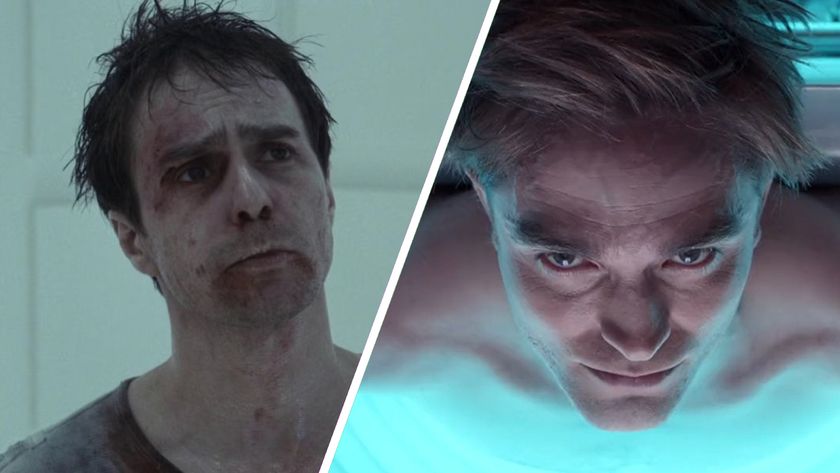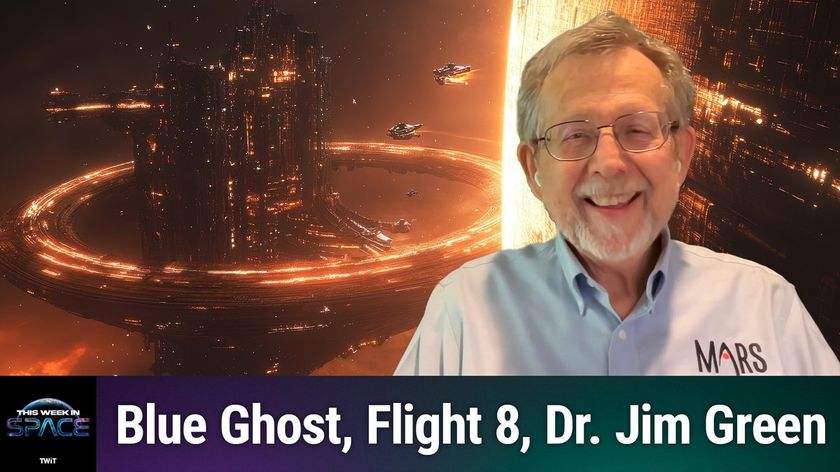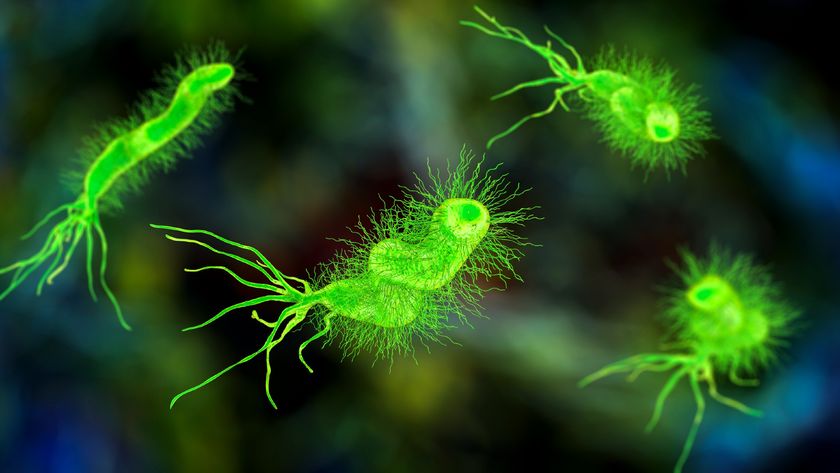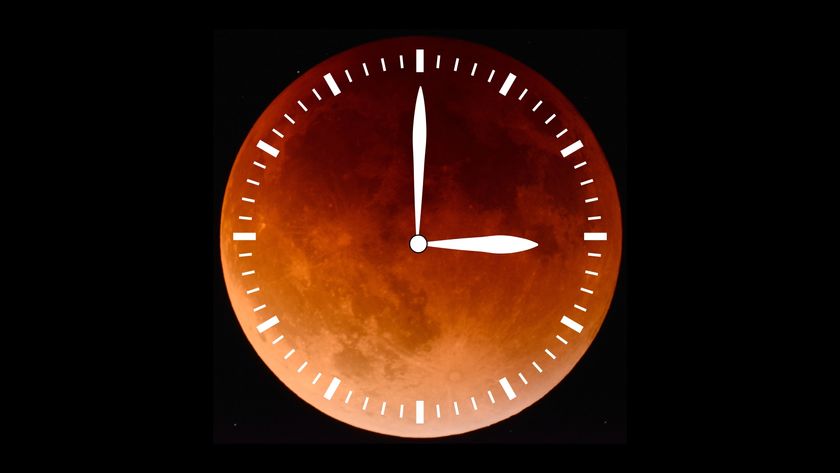Sci-Fi Gets Science Right: 'Passengers' Nails the Physics
The new science fiction film "Passengers" takes viewers on a journey to the future, when glitzy interstellar starships can transport thousands of hibernating passengers to planets in neighboring star systems. While aspects of its story line may seem like pies in the sky to skeptics, creators of the futuristic space thriller certainly outdid its predecessors "Gravity" and "Interstellar" in the physics department.
"Passengers" is the story of two space travelers (played by Chris Pratt and Jennifer Lawrence) on an interstellar spaceship who wake up from an induced state of hibernation, or stasis, 90 years ahead of schedule. Unable to put themselves back into hypersleep, the two must come to terms with the knowledge that they will die on the spaceship before ever reaching their destination.
While the story is set way ahead of the current time and features technology that either doesn't exist yet or seems entirely out of reach, the makers of "Passengers" clearly took their science seriously. ['Passengers': An Interstellar Space Film in Pictures]
An 'Interstellar' journey
Rather than speeding through wormholes — theoretical tunnels that provide shortcuts through space and time — to hop from planet to planet like the astronauts do in the 2014 film "Interstellar," the sleeping astronauts aboard the spaceship Avalon in "Passengers" are traveling at one-half the speed of light. They're on a 120-year journey to an Earth-like planet called Homestead II that's located in a neighboring star system.
It's impossible to build spaceships that fast with today's technology, but the idea is more practical than the wormhole voyages depicted in "Interstellar." While scientists have yet to find evidence that such tunnels exist, traveling at a fraction of the speed of light is physically possible — at least theoretically.
But humanity has a long way to go before spacecraft will be able to travel as fast as one-half light speed. Light travels at over 670 million mph (1 billion km/h). The fastest machine humans have ever built was NASA's Juno spacecraft, and its top speed hit about 165,000 mph (265,000 km/h) relative to Earth.

The production designer for "Passengers," Guy Hendrix Dyas, came up with an original design for the fictional Starship Avalon that's based on the old concept of a vessel that rotates to create artificial gravity.
Get the Space.com Newsletter
Breaking space news, the latest updates on rocket launches, skywatching events and more!
"I took the concept of the rotating wheel and stretched it out into an elongated shape, which naturally led to these wonderful, twisted blades," Dyas said in a statement. "When you look at the spacecraft from the front, it looks like this classic rotating wheel — but the moment you turn, it becomes a three-dimensional object of extraordinary length."
Spacecraft featured in "Gravity" and "Interstellar" certainly look more like those that exist today. "Gravity" showed NASA's space shuttle, the International Space Station, Russia's Soyuz spacecraft and China's Tiangong-1 space station. Astronauts in "Interstellar" ride a rocket that closely resembles NASA's Space Launch System (SLS). Even though the spaceship in "Passengers" seems totally out of this world in comparison, its design is still based on real, albeit incredibly futuristic, science.
Tether trouble
It seems as though the makers of "Passengers" took note of some of the most commonly criticized scientific fallacies in "Gravity" and learned from those past mistakes to make their own film more accurate. You don't have to be a science-minded movie critic to rue the famous "Gravity" scene in which the character played by George Clooney (unnecessarily) falls to his death while breaking the laws physics in low-Earth orbit.
In that scene, George Clooney's character is dangling from a broken tether outside the International Space Station as Sandra Bullock's character holds onto the other end. Clooney's character insists that Bullock's let go of the tether to save her own life at the expense of his. In reality, she could have pulled him to safety in the zero-gravity environment by exerting hardly any effort. Instead, Clooney's character lets go and is flung into space by some mysterious unscientific force.
"Passengers" does not make the same mistake of sloppy tethering physics. When the characters, portrayed by actors Chris Pratt and Jennifer Lawrence, exit the ship in their spacesuits and float with their tethers in zero gravity, they don't appear to break any of Newton's laws of motion. The two tug on their tethers with ease while experiencing weightlessness.
In one scene, the two float together in space while connected by a long tether. When they drift apart, the tether straightens out entirely before jerking them back together. There is no tension on the tether, because there is no external force pulling them apart. "Gravity" got this basic physics concept totally wrong, so science-minded viewers should be glad that "Passengers" is setting the science straight.
Sticky tears
While you might think that crying in weightlessness would send teardrops floating around inside an astronaut's helmet, that wouldn't happen. "Gravity" received some criticism for Bullock's floating teardrops, and "Passengers" does not repeat that mistake.
The problem with Bullock's tears in "Gravity" has little to do with a gravitational force. Rather, the producers did not take into account that water molecules stick together because of surface tension. In the case of an astronaut crying in space, surface tension would keep those tears stuck to the astronaut's cheeks. When Chris Pratt sheds tears during a zero-gravity scene in "Passengers," his tears stay stuck to his face — as they should.
These are but a few of the big scientific qualms that "Passengers" got right after Hollywood got it wrong in previous films. Critics will probably find other scientific points to nitpick in the film, but at the very least, it seems the makers of "Passengers" learned from the mistakes of other big Hollywood filmmakers.
Email Hanneke Weitering at hweitering@space.com or follow her @hannekescience. Follow us @Spacedotcom, Facebook and Google+. Original article on Space.com.
Join our Space Forums to keep talking space on the latest missions, night sky and more! And if you have a news tip, correction or comment, let us know at: community@space.com.

Hanneke Weitering is a multimedia journalist in the Pacific Northwest reporting on the future of aviation at FutureFlight.aero and Aviation International News and was previously the Editor for Spaceflight and Astronomy news here at Space.com. As an editor with over 10 years of experience in science journalism she has previously written for Scholastic Classroom Magazines, MedPage Today and The Joint Institute for Computational Sciences at Oak Ridge National Laboratory. After studying physics at the University of Tennessee in her hometown of Knoxville, she earned her graduate degree in Science, Health and Environmental Reporting (SHERP) from New York University. Hanneke joined the Space.com team in 2016 as a staff writer and producer, covering topics including spaceflight and astronomy. She currently lives in Seattle, home of the Space Needle, with her cat and two snakes. In her spare time, Hanneke enjoys exploring the Rocky Mountains, basking in nature and looking for dark skies to gaze at the cosmos.











